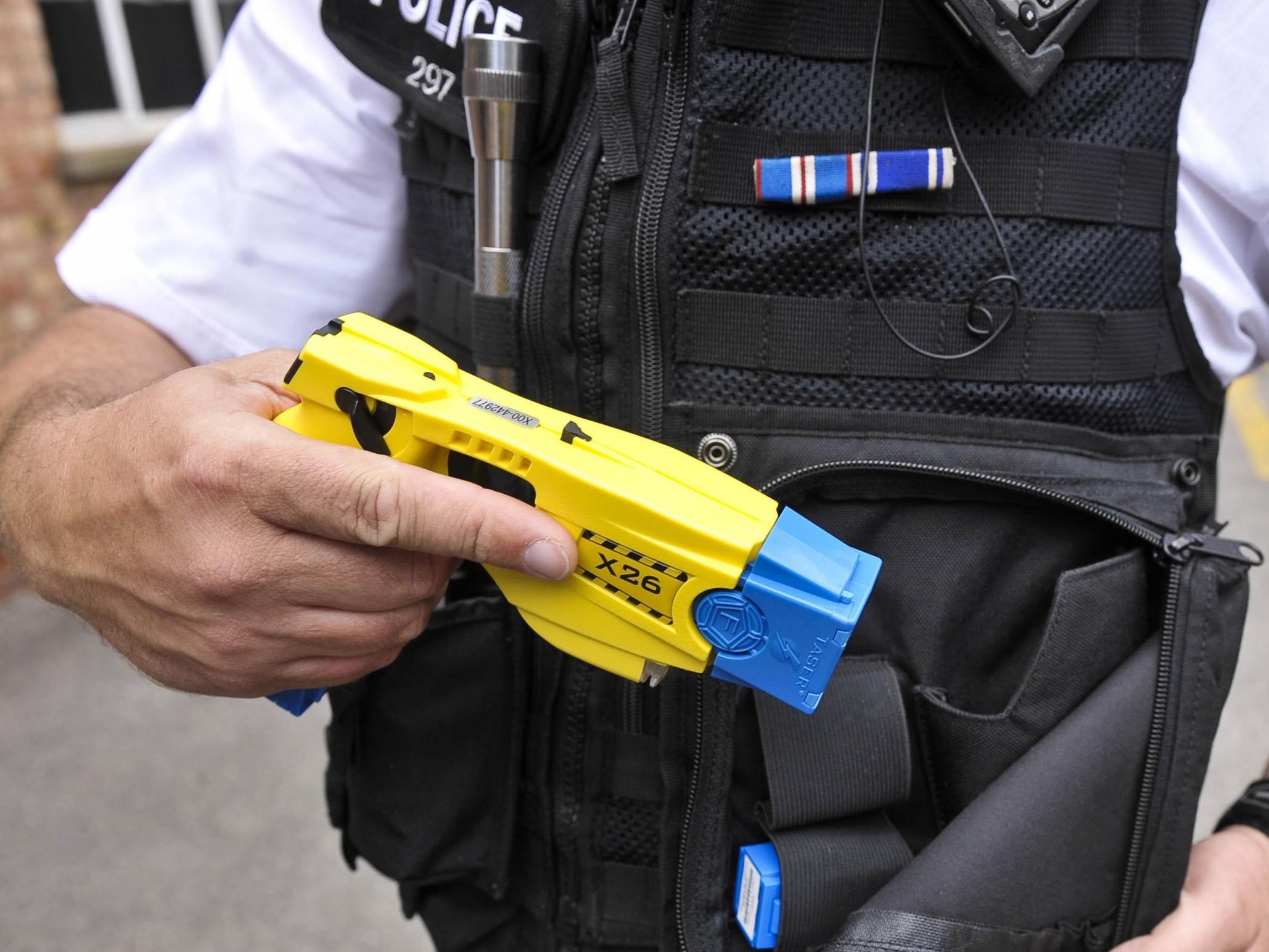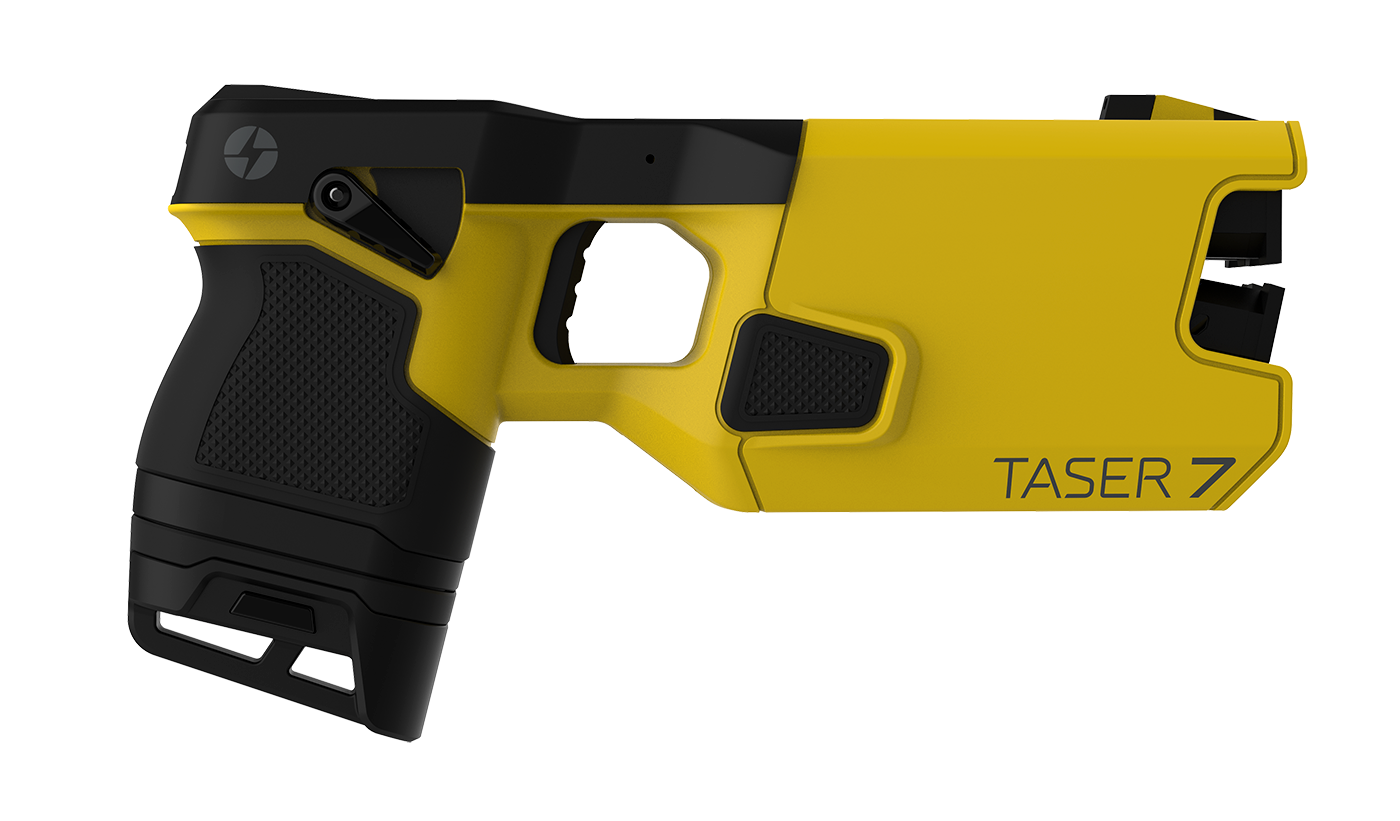Police to be issued with ‘more painful and less accurate’ Tasers in England and Wales
Official assessments raise concerns over risk of injury to suspects and the public from new Taser 7

Your support helps us to tell the story
From reproductive rights to climate change to Big Tech, The Independent is on the ground when the story is developing. Whether it's investigating the financials of Elon Musk's pro-Trump PAC or producing our latest documentary, 'The A Word', which shines a light on the American women fighting for reproductive rights, we know how important it is to parse out the facts from the messaging.
At such a critical moment in US history, we need reporters on the ground. Your donation allows us to keep sending journalists to speak to both sides of the story.
The Independent is trusted by Americans across the entire political spectrum. And unlike many other quality news outlets, we choose not to lock Americans out of our reporting and analysis with paywalls. We believe quality journalism should be available to everyone, paid for by those who can afford it.
Your support makes all the difference.Police are to be issued with new Tasers despite tests finding they hit their targets less frequently than older models.
The Home Office claimed the new Taser 7 was “more accurate” on balance because its barbs fly faster and straighter at suspect, but concerns were raised in official assessments.
Tests found higher “miss rates” for the updated model than the two older versions currently used by British police, and warned that it would cause increased pain, a higher risk of injury, and a safety threat from flying probes.
Police chiefs across England and Wales will be able to procure the Taser 7 despite a warning over the use of stun guns from the Independent Office for Police Conduct (IOPC).
In May, the watchdog said they were being used disproportionately against black men and mentally ill suspects, and a series of incidents where suspects were injured have sparked a backlash.
A report by the Scientific Advisory Committee on the Medical Implications of Less-Lethal Weapons (SACMILL) said the Taser 7 “may be more painful for the subject” because of its electrical output.
A document published on Monday said the weapon’s “more robust” incapacitation “may elevate the risk of skull and other bony injuries associated with uncontrolled falls and of musculoskeletal injury due to a more forceful muscle contraction”.
It predicted an “increase in the incidence of darts penetrating the body to their full depth [as well as] injuries to deeper-lying organs and tissues”.
SACMILL said that a new system meaning that electrical probes detach from connecting wires after being fired presents a “new injury risk” to passers-by.
The committee found that barbs “may have a tendency to stray further from the point of aim”, making them more likely to hit vulnerable areas of the head and neck or miss suspects entirely.
The miss rate in one trial was 58 per cent, compared to 3 per cent for the older Taser X2 and 8 per cent for the X26, the report said.
Overall, tests by the Defence Science and Technology Laboratory (DSTL) at Porton Down found a “consistently higher miss rate” for the new model when fired at different angles and in different light.
Officials said the figures could be improved by updated training for officers by the College of Policing, which will require police to pass new accuracy tests in order to use a Taser 7.
The National Police Chiefs’ Council (NPCC) lead for Tasers said the new model had “passed rigorous independent scientific and technical assessments” before being authorised.
“This testing ensures all necessary safety standards are met, alongside continued operational reliability when using the device against those who are violent or threaten violence,” deputy assistant commissioner Lucy d’Orsi added.
“Procuring the Taser 7 is a matter for individual police chiefs, who deploy Taser within their force area in line with their strategic threat and risk assessment. The deployment of Taser will differ from force to force due to many factors.”
Police leaders have committed to issuing every officer carrying a Taser with body-worn video cameras, which should be used to record any usage.
Chief constable Mike Cunningham, chief executive of the College of Policing, said all officers carrying the weapons would be trained to “high national standards”.
The Home Office, which announced £10m funding for more Tasers last year, said that if forces choose to buy the new model training could start within weeks.

Priti Patel, the home secretary, said: “It is sickening that our brave police officers face assaults and attacks as they work tirelessly to keep us all safe.
“They are our protectors and I will do everything in my power to give them what they need to keep themselves and the public safe.
“This new Taser model will provide a safe and effective tool for apprehending criminals.”
The Police Federation, which represents rank-and-file officers, welcomed the announcement amid a rise in prosecutions for assaulting police.
National vice-chair Ché Donald said: “Tasers are a vital piece of equipment which keeps both the public and officers on the frontline safe.
“Policing is tough and more of my colleagues are being assaulted so it’s essential they are given the best training, the best equipment and the support they need to do their job.”
Taser incidents in England and Wales rose by 39 per cent to 23,500 in England and Wales in 2018-19, and the year saw a record of 2,700 discharges.
One in five incidents involved black people, who make up only 3.3 per cent of the population, while two thirds involved white suspects.
Tasers were only fired 11 per cent of the time - as opposed to merely drawn or aimed - and police must record their use of the weapons any time they are drawn.
Subscribe to Independent Premium to bookmark this article
Want to bookmark your favourite articles and stories to read or reference later? Start your Independent Premium subscription today.
Join our commenting forum
Join thought-provoking conversations, follow other Independent readers and see their replies
Comments